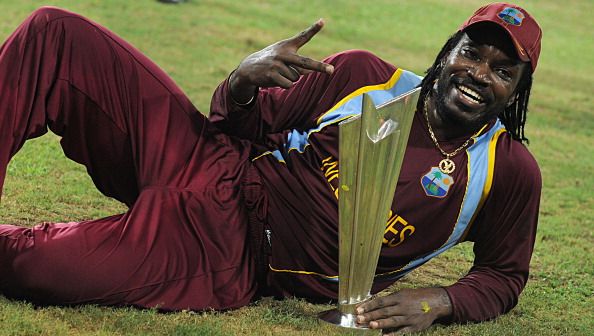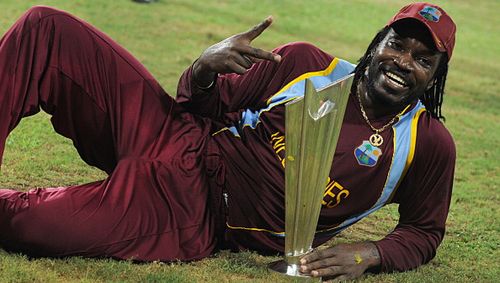
The raison d'etre of the Caribbean Premier League

West Indies cricketer Chris Gayle celebrates his team’s victory in the ICC Twenty20 Cricket World Cup’s final match against Sri Lanka
In early 2008, India played South Africa in a Test series at home. This series had a lot going for it – Virender Sehwag’s second (and the fastest of all time) triple century, a hostile early morning spell by Dale Steyn, which reduced India to 76 all out and M.S.Dhoni’s first outing as a captain. Sadly, no one remembers the series as well as they should.
Because all this was happening days before the inaugural edition of the Indian Premier League. Not so long ago, India had trounced arch-rivals Pakistan to win the 1st edition of the World T20 and take an open-top bus ride to celebrate it. A nation, which had played only one Twenty20 match prior to the World T20 was now looking at the format as the future of the game. Big money, bigger Bollywood stars, after-match parties – the fun and games were only about to begin.
There were Twenty20 leagues in England and Australia (and even in India in the form of the Indian Cricket League) before this, but none of them had the snazziness of the IPL. Since then, we have had most of the Test playing nations announcing a jazzed-up Twenty20 league.
In that sense, the Caribbean Premier League is a bit late in the day. But it does bear more than a canny resemblance to its Indian version. The league comes on the heels of a successful World T20 for the Windies, which extended to an unbeaten streak of victories in the format till the recent series against Pakistan. The current West Indian side, like their Indian counterparts, are a young side of exciting players under a new and young captain. And, come to think of it, CPL does not sound exactly original.
But the similarities end there. Even before the 2008 IPL, the BCCI was the richest board in the world of cricket – the league only helped to widen the gap. In contrast, the WICB, like their team, is closer to the bottom of the page than the top when it comes to rankings. The IPL turned a lot of Indian first class cricketers into millionaires overnight; the CPL could very well end up as the source of funds required to sustain cricket in the Caribbean in the near future.
And that can be reason enough for its justification. Recently, a Test series against Sri Lanka was scrapped for a tri-series involving the “popular” team India. Pakistan followed with a series of 5 ODIs and 2 T20s. The last time the West Indian team played a Test match was against Zimbabwe in the first quarter of the year. Players like Chris Gayle and Kieron Pollard have openly spoken about their fondness for the shortest version of the game. Nearly all the members of the World T20 winning squad ply their trades in T20 leagues around the world and are recognized amongst the best of players in this format. Ironically, by pushing money into the coffers of the WICB, the CPL can actually lead to the board taking greater risks to promote Test cricket with quality opposition in front of dwindling home crowds.
More importantly, the games should keep the crowds happy. The heydays of West Indian cricket are long gone, but cricket is still a passion in the islands. For a team, which isn’t too accustomed to winning, winning against itself with no losers in the game should uplift national sentiment even though it might be divisive in nature. After eight Test losses to England and Australia, the 2012 IPL was more than a Twenty20 tournament to beleaguered Indian fans; it was a sense of succour that here was one tournament which an Indian team would win. The concept might sound self-defeating by itself but can often be a morale-boosting one.
And even if it doesn’t do that, at the bare minimum the CPL offers the crowds a greater chance to catch their own stars live in action. The likes of Chris Gayle and Dwayne Bravo have often entertained galleries across the world while spurning their own countrymen for money and politics alike. This is a rare period of stability for West Indian cricket when they have all their major players available to play in mind and in body. Talent is a natural commodity in this conglomerate of nations; the CPL just might be the burning log which rekindles the fire of interest all over again.
There will be reggae and beer flowing in the stands, come July 30. There will be also critics who will mourn the death of Test cricket in these parts and rebuke the board for shamelessly aping its bigger brothers. No matter which side you are on, you cannot deny the CPL its license to charm.